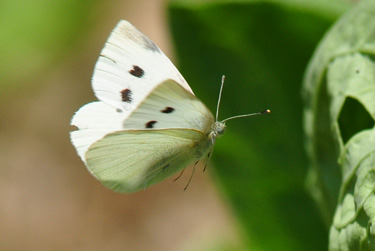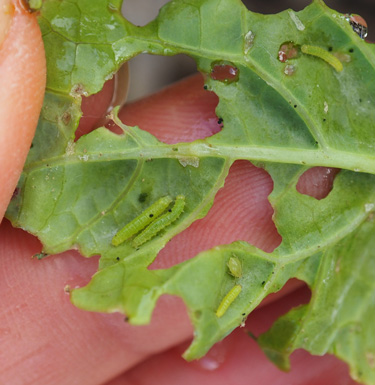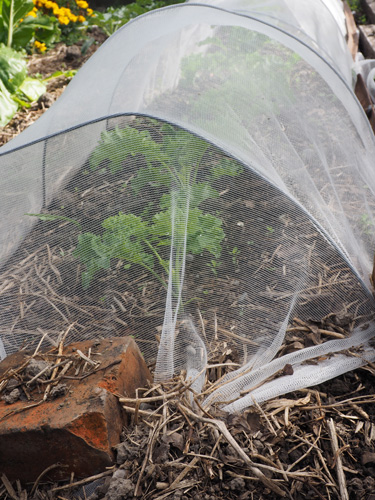Brassica massacre
Six ways to fight cabbage caterpillars
Most of us happily shrug off the odd hole in a home grown cabbage leaf, but serving poached caterpillars with the broccoli gets beyond a joke! White butterfly and the smaller diamond back moth are two major pests of brassica crops in warmer months.
Often, we can avoid the worst pest damage by being clever about the planting time; growing brassicas mainly over winter when there are no butterflies about (and the low temps make cabbages sweeter). This is easier said than done in climates where brassicas need planting early while butterflies are still fluttering about. The quick growing caterpillars can decimate young seedlings. In controlling this pest, it’s best to act early before serious damage is done.
| 1 | Covering the crop with insect mesh can prevent butterflies laying their eggs on the leaves. Use a mesh that will stop a butterfly but preferably not so fine as to deter natural predators. Plants must be completely covered. The mesh should be supported to sit above the plants so the butterflies can't rest on top to lay through the mesh, and the edges must be weighted down-butterflies will find their way through any gap. Check your seedlings for any eggs that may have been laid before covering. Crop cover is not so useful for crops that need insects for pollination. |
| 2 | ‘Digital control’ can be effective if you are vigilant. Some gardeners keep numbers down by picking the eggs and caterpillars off the leaves. Look to the centre of the plant where newly hatched caterpillars may hide. Eggs are often laid on the undersides of leaves and can be easily rubbed off. |
| 3 | Yates Mavrik is an effective spray for white cabbage butterfly caterpillars and is safe to bees and soft on beneficial insects. |
| 4 | Yates Success Ultra is the most cost effective for white butterfly caterpillars and is derived from soil bacteria. It has ‘translaminar action’ which means it moves into the leaf and won't be wash away in rain. Plus it’s not so critical if you miss spraying the undersides of leaves. Avoid spraying when bees are foraging. There is a short withholding period for some crops. If aphids and mites are present as well, then Yates Mavrik would be a better choice. |
| 5 | Grosafe Bioneem added to Success Ultra or Mavrik is most effective. Neem has a repellent action and discourages egg laying by the butterfly. It is also necessary to use a wetting agent (spreader / sticker) as brassica leaves repel water. |
| 6 | Companion planting supports natural predators. Members of the carrot family (carrots, parsnip, parsley, dill) attract spiders and also tiny parasitic wasps which prey on caterpillars. The herb wormwood helps repel the butterflies. |
18-Feb-2016

White butterfly

Holes in cabbage caused by the white butterfly caterpillars

Mesh / net crop cover


